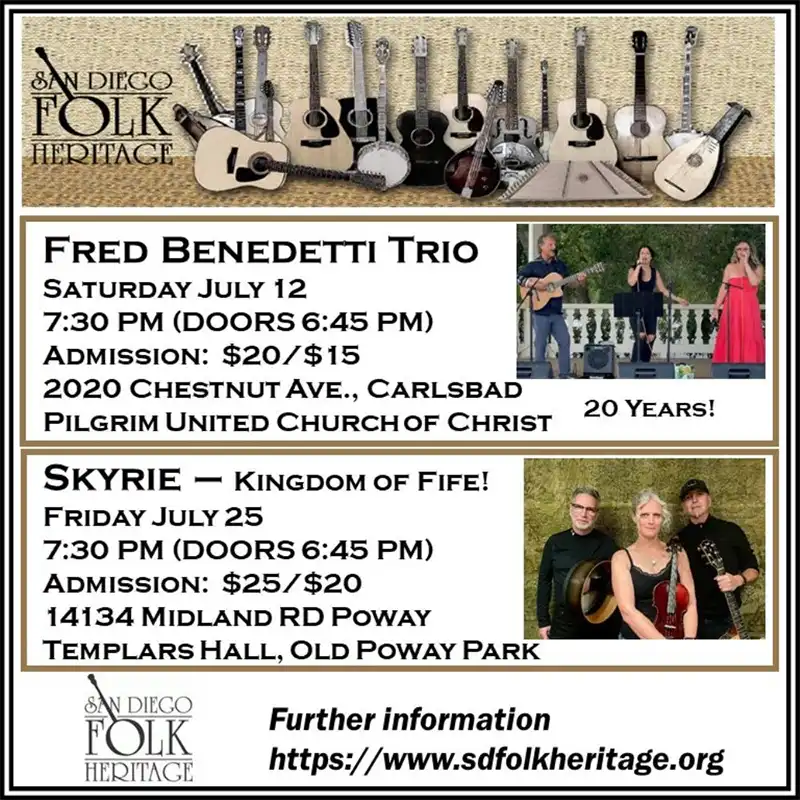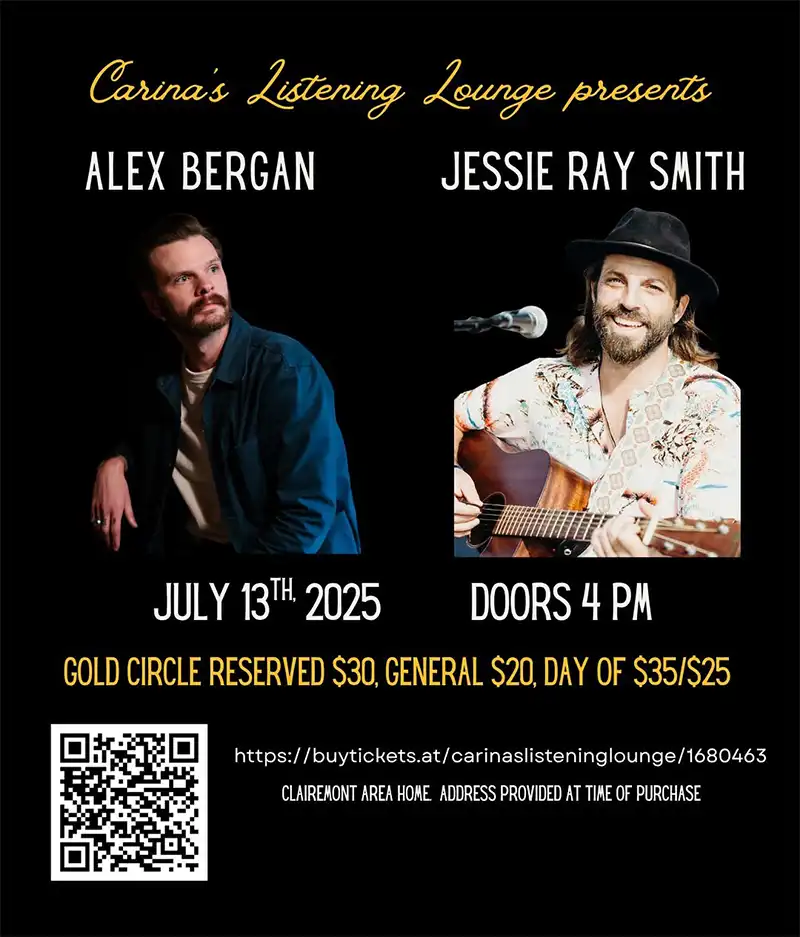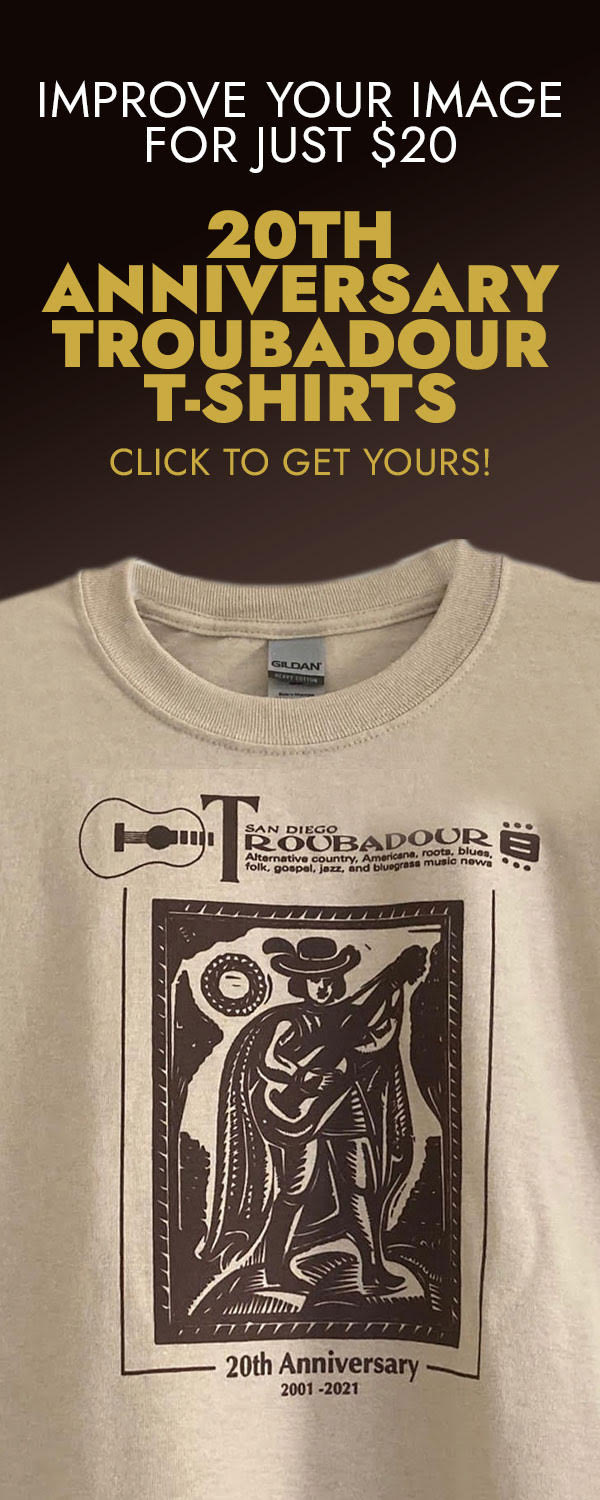Ask Charlie...
Transposing
Hello Troubadourians! I’ve written about transposing songs and music a couple of times in recent columns, and it came up again just a few days ago in a conversation on Facebook. So, I thought it would be a good time to readdress the subject and add some detail about the mechanics of transposition as well as why you might choose to transpose a vocal song or a piece of music. Essentially, transposing is the act of changing the key in which a piece of music is performed. That sounds simple—and in some cases it can be—but there are times when the process is complicated by many things, not the least of which is that something “just doesn’t sound right…” As we get into the discussion of the process, I think it is important that we also discuss the why of transposing. The most obvious reason is to put a song into a key where it can be sung comfortably by a vocalist, whether that is ourselves or someone else. On a piano, everything is laid out in front of you and transposing is fairly straight forward. Transposing for guitar can be as simple as putting a capo on the guitar at different frets until we arrive at a key that is comfortable for our voice. But that is just the first step. As we are aware, putting a capo on a guitar changes more than the key. It also changes the timbre of the guitar. Sometimes that works just fine, but other times, as I said, it just doesn’t sound right. Whether it’s too much jangle or not enough low-end or both, capoing can detract from the song as often as it can make it more comfortable to sing.
Using a capo to find a key for your voice might appear linear on the guitar but might not be linear for your voice. You may often find that the best key is a fourth or fifth from the original key. For instance, if the original key is G and is too high for you to sing comfortably, try the key of D. It sounds counter-intuitive but it’s all about your range as a singer and less about the actual key. Transposing the key by a fifth rather than a step or two can often place the melody into your comfortable vocal range and keep it playable on the guitar without a capo.
Let me expand on the when and why to use a capo just a bit. Over time, I have come to view the capo differently than as just a device to transpose the key of a song. I still use it that way in a limited manner to change or re-pitch a song a couple of steps. For instance, putting a capo on the second fret to play a song using the G position chords but actually be in the key of A—or to make an instrumental piece easier to play. Both of these are old bluegrass tricks; the former to push a song into that “high lonesome” sound (assuming one can actually sing that high) and the latter to change the sound of the guitar or create lower action for a fast instrumental piece that was often necessary for old-school players who had their instruments set up with medium gauge or heavier strings and high action, both of which make the guitar louder at the expense of playability. With modern pickup systems volume isn’t an issue, so my instrument is set up for the best playability and intonation as far up the neck as possible. For me, that moves the capo into my second category of using a capo for effect.
The change in the guitar’s timbre by applying a capo within the first five frets (preferably within the first three) can elevate a song into a different feel or tone that can’t be achieved in an open-position chord pattern. An example of this would be a song in the key of D, but instead of playing it in open position, I put a capo on the second fret and play it in the key of C. The vocal stays the same, but the available chord voicings and leading tones change significantly. This technique can really accentuate a melody or chord progression that is unavailable in the open position in the original key. Be warned, it is very easy to overuse this technique and, in my opinion, the higher you apply the capo, the more you move into the third category of using a capo to blend guitar parts.
With two—or more—guitars all playing the same chords in the same position, it is easy for the sound to become indistinct and mushy. But if one guitar is capoed even just a whole step higher than the other and plays a transposed chord progression (such as mentioned above where one guitar plays in the key of D in the open position while the other one plays in the key of C with a capo at the second fret), the sound is significantly different. Even though both guitars are playing the same chords, the blend of the shifted intervals in the chords adds a fullness to the sound that isn’t available if both were playing in the open position. The farther away from each other the guitars are, the more this effect is enhanced. Of course, the reverse is also true where you can choose to play in an open position if the other guitarist is capoed up. I often play with other players who use a capo to change the key of a song and in those cases, I tend to gravitate to playing in the open position. This gives me the full range of the guitar to work with. (Sometimes this requires some negotiation as to capo placement so that I can transpose the chords into an open position…).
All this talk about capos leads into the real discussion of the art of transposing. Play anything in any key, is sort of a trained musician attitude, and it’s how I was taught. “Real” guitar players didn’t use capos, and in fact my original teacher called it a cheater. I think this comes from playing with non-C instruments such as brass, woodwinds, and other horns. I get that, and I can play in any key without a capo, but sometimes it isn’t much fun. (Eb is particularly annoying for me.). This training was the genesis of my journey into transposing songs either in rehearsal or on the fly. The latter is the real measure of your transposition skills. And it doesn’t have to be into non-guitar keys either. If you know a song in E and the band you are playing with plays it in A, you have to rethink all of your moves. At a recent jam session, someone called Jeff Beck’s “Freeway Jam” and started the song in A. The original recorded version is in G and the positions are very particular on the guitar to do the licks he does. They don’t work the same in A and I have to admit that I struggled with the key change. Now, I could have stopped the jam and asked that we play it in G as it was a private session and non-judgmental, but I wanted to see how I could do. Not very well… I did have us play the song again in G so that I could redeem myself, but I had expected to do better. This was a seemingly simple two-fret transposition but where things are actually on the guitar positionally—for that song at least—complicated things for me. I have since gone back and reexamined the song in A and even without the pressure of the moment, that song still feels and sounds weird in any key other than G… so it goes sometimes.
Most of the time transposing is automatic for me because I practice transposing songs into other keys—just in case. I’ve written about working out “Mr. Bojangles” in all the open key positions just so that I could have those cool passing chords under my fingers in any key. I’ve also written about transposing—and rearranging—”Last Train to Clarkesville” for Mark Jackson and myself to cover in a way that we were able to sing it and make it sound like us. And I often play baritone guitar, which is tuned a fourth lower than standard and requires that I transpose to play with other regular-tuned instruments. But just as I mentioned earlier about how using a capo seems to be linear, transposing isn’t really that way. It’s more about understanding the relationships between the keys and the limitations and idiosyncrasies of the guitar and being able to use them to your best advantage. Knowing the Circle of Fifths is essential to transposing as it guides you to being able to understand and visualize the relationships of chords to each other and how different keys overlap and interact. This is where understanding the non-linearity works in your favor, both as a vocalist and as an instrumentalist. While the guitar gives us the visual reference of half-steps from the fretboard layout, that thinking can be limiting. Being able to think of chords and keys as overlaying each other and interacting in similar sonic spaces is the skill you need to develop for effective transposing. Knowing how G relates to C or E relates to A goes a long way. We can deal with the chromatic stuff another time…
Need to know? Just ask… Charlie (ask.charlie@hotmail.com)






